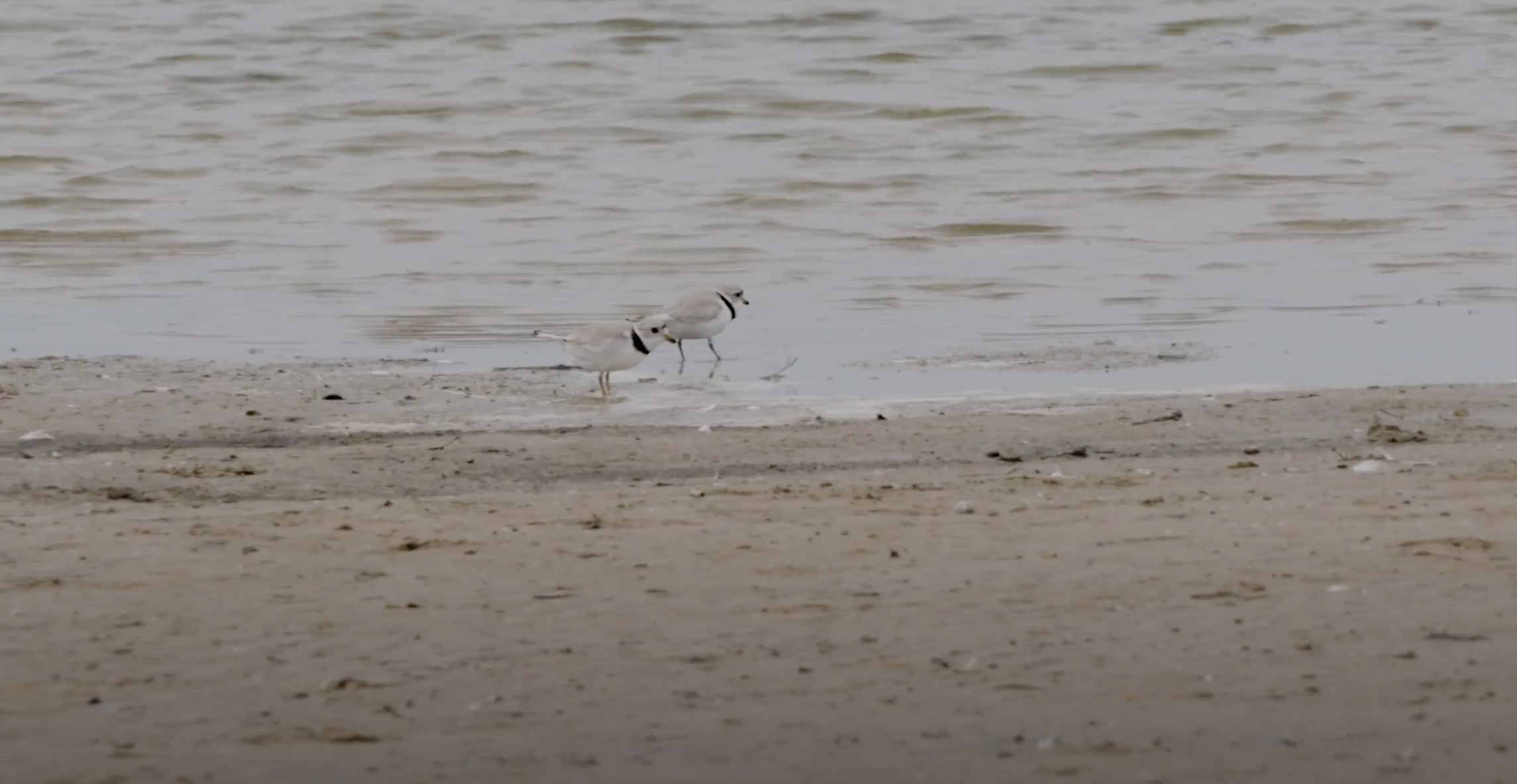
Everyone loves Monty and Rose – and Great Lakes Now featured the charming piping plover pair earlier this year.
Now Monty and Rose have chicks and even grand-chicks, many of whom are thriving as they fly south for the winter.
Chicago-based filmmaker Bob Dolgan has documented the progress of Monty and Rose and their offspring over the years. He appeared in Great Lakes Now’s segment on piping plovers. Learn more about his work at montyandrose.net.
Great Lakes Now talked with him to see how the birds are doing and what else in store for them.
Watch the interview here:
Or read the transcript of the interview with Dolgan below. The following interview was edited for length and clarity.
Great Lakes Now: I think we need to get to what everybody is probably most concerned about, which is how are Monty and Rose?
Bob Dolgan: Well, Monty and Rose, by all accounts, are doing well. We’ve had some photographs of them from the wintering grounds, Monty in Texas and Rose in Florida, and the reports are that they’re doing well, they’re where they’re supposed to be. These are the places where they go each winter. And thankfully, some of the big storms that have come through haven’t hampered them, it seems in any way, and some of their offspring, at least one nest has also been seen on the wintering grounds. So everything has gone well since that segment aired. They went south, and they had two chicks that made it to fledging this summer at Montrose Beach.
GLN: That’s incredible. And the other part of that that blows my mind other than the difficulty of actually getting some birds to fledge is this concept that they fly to different states for the winter and somehow know when to reunite in Chicago? Is there any understanding of what tells them it’s time to fly back?
BD: Well, anything we have are theories. We can’t talk to them and ask why they do what they do. But it’s remarkable that they can reunite in Chicago each year within almost 24 hours of each other, one year on the very same day they arrived at the beach. So I think it’s one of those mysteries of migration, and it’s not unique to piping plovers. There are all sorts of bird species that seem to just know when to head north, when to head south. And oftentimes that involves reuniting with the mate just like Monty and Rose have.
GLN: So let’s talk about the generations that Monty and Rose have produced. How many grand-birds and great-grand-birds are we talking about now?
BD: Well, Monty and Rose had two chicks that made it to fledging in 2019. They had three chicks in 2020, and two in 2021. And the most famous of their offspring is Nish, who landed in 2021 at Maumee Bay State Park in Ohio and took up with Nellie there. And Nellie came over from Pennsylvania, which is a whole story unto itself, and nationally became the first piping plovers then to nest in Ohio in about 80 years, which was an incredible phenomenon into itself and just delighted everyone over there near Toledo.
And so Nish has been seen on the wintering grounds. Nish and Nellie’s offspring, they had two that, well, three that made it to fledging, two that actually went south. One ended up in Detroit Zoo, where it is right now. As far as I know, the grand babies, the two grand babies that went south have not been seen yet. Although, a lot of us are sort of wondering and hoping when that will take place or if that will take place.
I think now the exciting question is whether these birds show up somewhere in the Midwest or around the Great Lakes and nest themselves next year, and hopefully Nish and Nelly go back to Ohio. So their story just keeps on evolving. And you know, the Monty and Rose family tree has just grown and hopefully that just continues. As you know, this is such a highly endangered species, down to about 70 or so pairs remaining. And so any single bird that makes it to fledging is a big victory and adds to those numbers.
GLN: There are a couple of bird species that I think of that have had some success rebounding, the bald eagle, the trumpeter swan, the wild turkey and even in more recent times, the Kirtland’s warbler, which has had its own success. Why is it been harder for the piping plover to get that foothold?
BD: Wow, that’s a great question, and those are some amazing success stories that you cited. I think for one, their numbers were even smaller than any of the species you named. Their total population on the Great Lakes had dwindled to just about a dozen pairs 30 years ago. And for I think each of those species, even the Kirtland’s warbler, you’re talking at least several hundred pairs were remaining at the sort of lowest point.
I think the biggest challenge is just the use of beaches around the Great Lakes, and we were talking before I came out about how well these birds blend into the beaches. You can’t even really see them, even when I go out there and I know I’m looking and I know they’re there. It can often be challenging to find them. And so when people are using beaches for recreational purposes, which is wonderful, but when the beaches are getting groomed and raked and we’ve as humans have utilized the vast majority of the beaches in some way around the Great Lakes. And so that leaves very small pockets where piping plovers can nest, and they are at great risk of predation by falcons and other species. We had a skunk take a clutch of eggs on the beach this year.
It’s a great question, because it’s a different sort of set of circumstances than I think those other species have faced, but I also think with the great successes that those birds have had, that maybe with that kind of momentum that could happen here with the Great Lakes plovers and continue to happen and maybe get us up to something like the 150-pair goal, which is what we have right now.
GLN: A 150-pair goal by when? When is that goal line set?
BD: Yeah, that timing has been stated as 150 pairs by the year 2050. And so that would be doubling the number of piping plovers over the next 30 years or so.
Catch more news at Great Lakes Now:
Community Sucker Science: Meet a Shedd Aquarium fish researcher and her stewardship volunteers
Featured image: Two piping plovers named Monty and Rose decided to nest on Montrose Beach just north of downtown Chicago. (Great Lakes Now Episode 1026)




